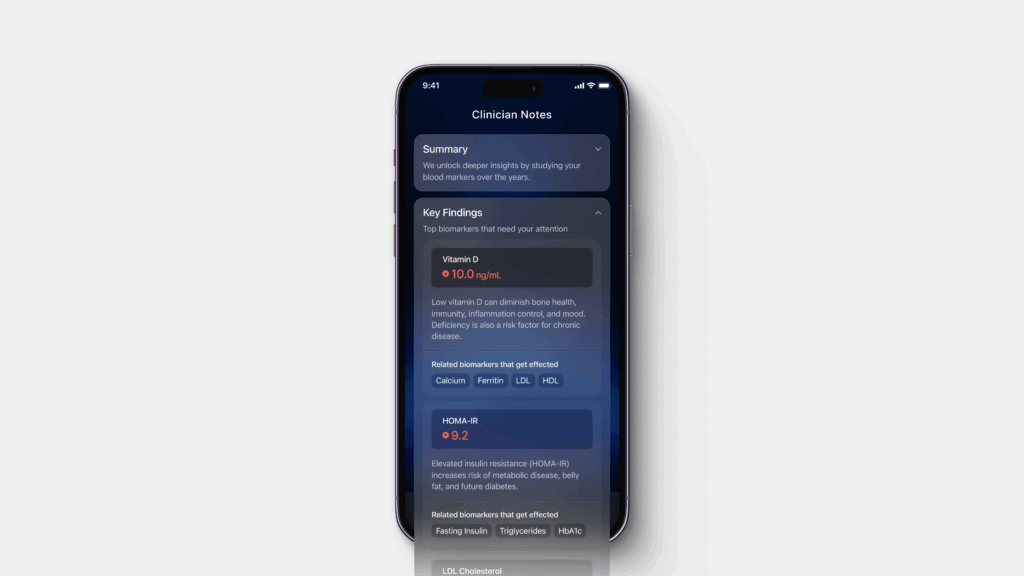The vagus nerve may be one of the most powerful tools your body has for regulating its response to stress. Yet, most people barely know it exists, let alone that it can be tracked and trained.
Acting as the primary lever of your parasympathetic nervous system, the vagus nerve helps regulate several processes related to recovery, inflammation, digestion, and mood. And unlike many biological systems within the autonomic nervous system, you may have control over this one. However, it takes conscious effort.
Here’s everything you need to know about how the vagus nerve works, how to quantify it with heart rate variability (HRV), and how it can help boost resilience. And make sure you read our guide to how the vagus nerve can help regulate your metabolism and supercharge blood sugar control.
Learn more: Heart rate variability (HRV) explained
What is the vagus nerve?

The vagus nerve is the longest cranial nerve in the body. Technically, it’s a pair of “nerves”, one running down the right side of the body and one on the left. Originating in the brainstem, as its name suggests, it “wanders” through the neck, chest, and abdomen, connecting to organs including the heart, lungs, and gut.
Its primary role is to help your body downshift your sympathetic (fight-or-flight) drive and upregulate your parasympathetic (rest-and-digest) function. As a result, it slows down your heart rate, supports digestion, and helps the body bounce back from stress. It may also impact mood regulation and inflammatory control.
One of the most important concepts tied to the vagus nerve is vagal tone. It’s a measure of how effectively the vagus nerve activates the parasympathetic system. Think of it as your nervous system’s flexibility. When vagal tone is high, your body can relax faster, recover more efficiently, and handle stress with more ease. When it’s low, your body may be stuck in sympathetic overdrive. Thus, recovery is slower, stress lingers longer, and your body stays on high alert even when the threat is gone.
Higher vagal tone often shows up in the form of a lower resting heart rate, better digestion, emotional stability, and higher HRV.
Read next: 10 ways to improve heart rate variability (HRV)
How the vagus nerve affects HRV
One of the most reliable ways to assess vagal tone is through HRV. Heart rate variability measures the variation in time between your heartbeats.
Rather than beating like a metronome, a healthy heart adapts well to the environment and stressors. Hence, it’s a marker of autonomic nervous system function associated with both physical and mental health.
The vagus nerve has the power to modulate HRV through its connection to the sinoatrial (SA) node. The SA is often called the heart’s natural pacemaker because it generates the electrical impulses that set the rhythm and pace of your heartbeat. Strong vagal tone leads to a more responsive, variable heart rate, especially at rest.
Among various HRV measurement methods, RMSSD (Root Mean Square of Successive Differences) is considered the most sensitive to vagal input, according to research. Studies have shown that higher RMSSD reflects better parasympathetic activity and is strongly associated with stress resilience, lower allostatic load (the cumulative burden of stress), and faster recovery after exertion. This makes HRV a useful proxy for understanding how well your vagus nerve functions, and how adaptable your nervous system is.
Can you bounce back and self-regulate after a stressful event, or does your sympathetic nervous system linger in high alert for hours or even days later? Once you develop awareness around that, it’s worth taking a look at how to manipulate the vagus nerve to your advantage.
How to stimulate the vagus nerve

Research points to several techniques that stimulate the vagus nerve through predictable physiological pathways. One of the most effective is resonance breathing, a slow and steady breathing pattern from 4.5 to 7 breaths per minute. This breathing rhythm activates baroreceptors (pressure sensors in the arteries) and has been found to enhance vagal tone.
Cold exposure is another well-established method. Researchers have found that immersing your face or neck in cold water activates the mammalian diving reflex leading to a parasympathetic response that slows the heart rate and stimulates the vagus nerve. Even brief exposure can increase HRV in the short term, especially when practiced consistently.
More passive techniques like humming, gargling, or singing may also offer benefits. These actions activate muscles in the throat connected to cranial nerves that form reflex circuits with the vagus nerve. While more evidence is needed here, researchers have found that a regular daily humming routine may help enhance the parasympathetic nervous system and slow down sympathetic activation.
Meditation and mindfulness may also help support vagal tone, but the evidence is still emerging. A recent meta-analysis examining how mindfulness-based interventions affect vagally-mediated HRV found a small, non-significant trend toward improved parasympathetic activity. However, more high-quality studies are needed to confirm whether this effect is consistent and clinically meaningful.
Signs your vagal tone might be low
If you’re suspecting that your vagal tone is low, there are few signs to pay attention to. These often show up in patterns, not single symptoms.
A persistently low or flat HRV, a resting heart rate that stays high even during rest, and feelings of burnout or chronic fatigue may all point to poor parasympathetic regulation.
Other signs can include sluggish recovery after workouts, disrupted digestion, or difficulty regulating mood.
If you’re feeling on edge a lot and consistently noticing these signs, your vagal tone may need a little more TLC and it may be worth speaking with a healthcare professional to rule out underlying conditions.
Conclusion
The vagus nerve isn’t something you “hack” once and forget. Consistent daily habits, many of which take just minutes, can go a long way and have ripple effects across how you feel, think, recover, and perform.
HRV offers a data-driven feedback loop and direct insight into this system, but it’s important to track trends over time rather than react to single data points. A low HRV score one day doesn’t mean your vagal tone is broken. It could reflect poor sleep, illness, a tough workout, or one too many drinks during dinner. The real signal is in long-term patterns that point to positive or negative adaptations over time.
Training your vagus nerve will help you unlock your parasympathetic superpower building a nervous system that’s adaptive and responsive as opposed to reactive and rigid.
The more flexible it becomes, the more resilience you build, not just physically, but mentally and emotionally too.







